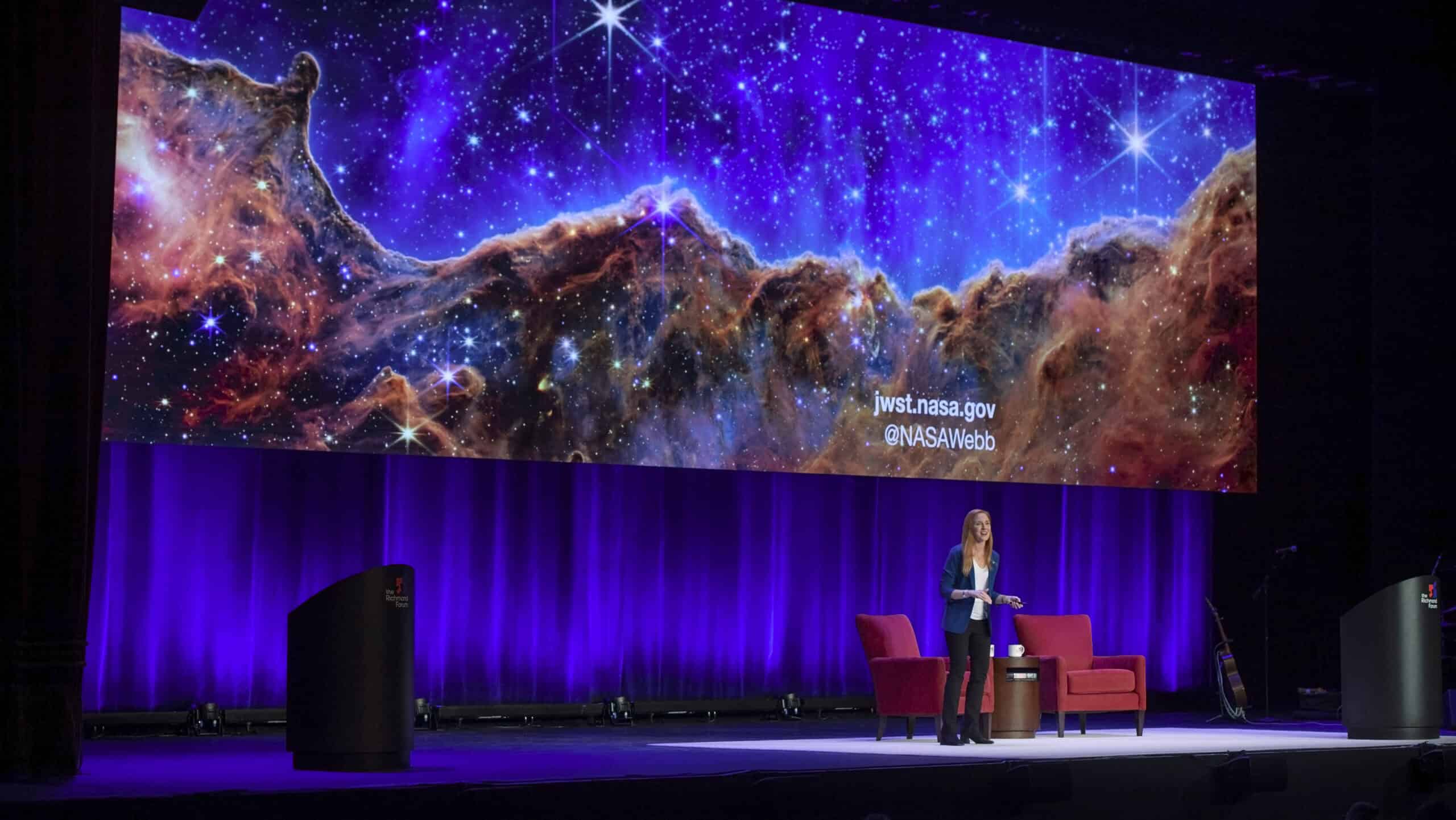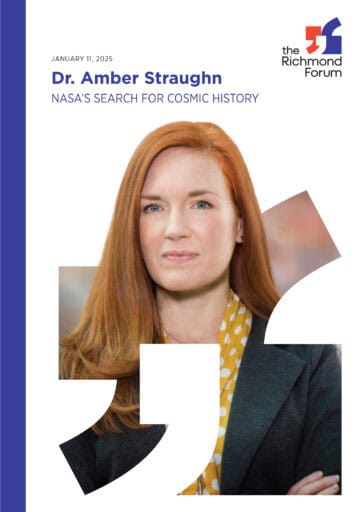Past Event On January 11, 2025
Dr. Amber Straughn
NASA’s Search for Cosmic History
We journeyed back to the intergalactic dark ages with a NASA astrophysicist and the James Webb Space Telescope.

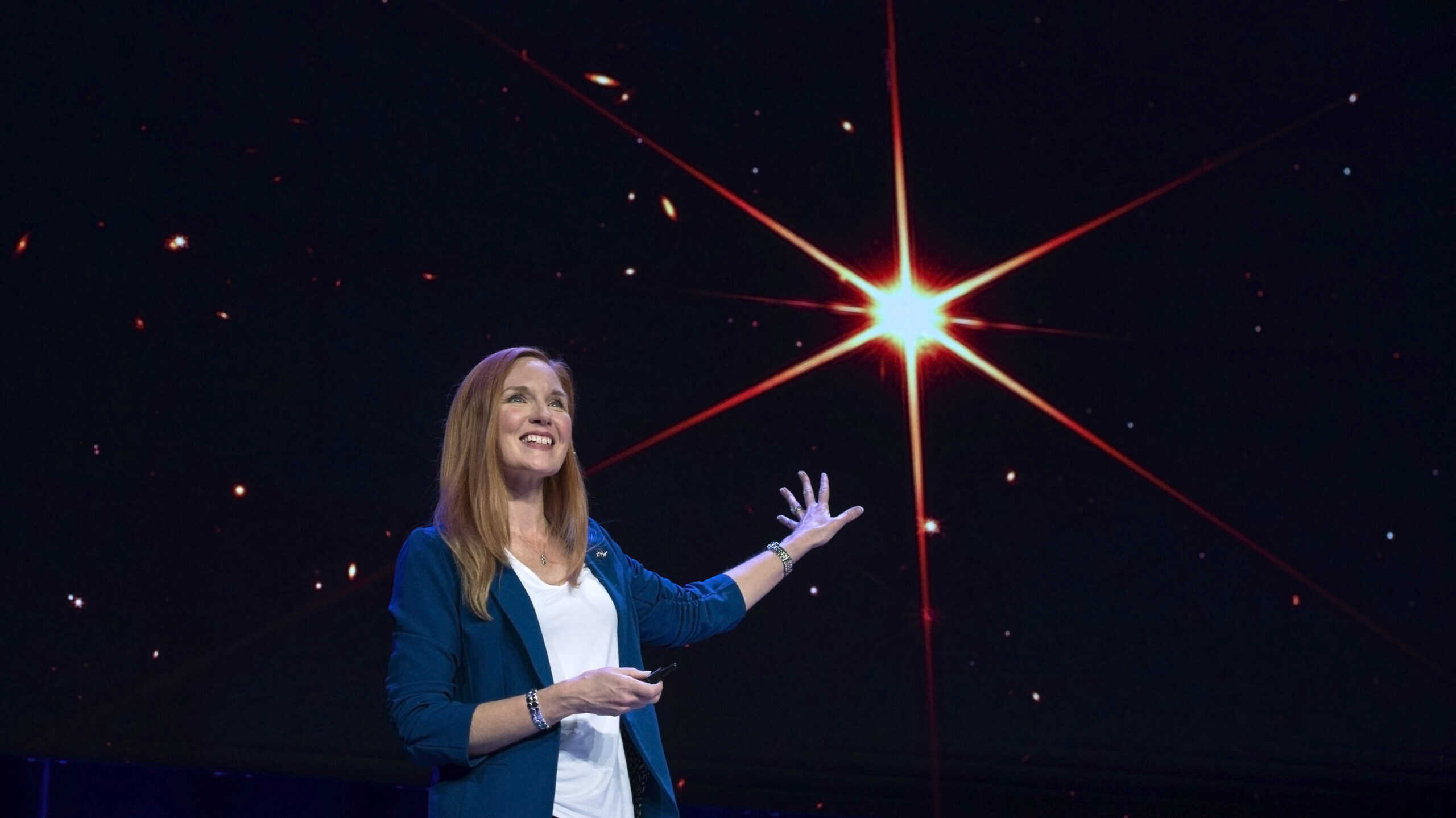
“Billions of years ago, not too far away, a star exploded and its contents eventually formed the sun and the Earth, which gave rise to us. The oxygen we breathe — the iron in our blood — was forged inside a star billions of years ago. We’re connected viscerally to the universe.”
Dr. Amber Straughn
NASA’s Search for Cosmic History
January 11, 2025
“This isn’t just a story about science and engineering, but a story of perseverance, of failure, of doing something that’s never been done before. A story that involves tens of thousands of people and spans decades. A story of daring to do something audacious. A story of the universe. A story of all of us.”
The launch of NASA’s James Webb Space Telescope (JWST) in 2021 was one of the most remarkable engineering feats in human history. Three years in and a million miles away, the telescope is revolutionizing our understanding of the cosmos, which may leave humankind with more insight into our origins and our place in the universe.
Astrophysicist Dr. Amber Straughn is no stranger to the expanse, having worked on the JWST project science team at Goddard Space Flight Center since long before its launch. Accompanied by stunning JWST-captured images, she took the Richmond Forum audience on a journey back into the cosmic dark ages, revealing the nature of exoplanets and galaxy formation of the early universe.
Growing up in the 300-person town of Bee Branch, Arkansas, Straughn spent many nights looking up at the night sky, sparking an immense curiosity about the universe. “When I was in the fifth grade, NASA launched the Hubble Space Telescope and I was hooked,” she shared. “All of those stars and nebulae and galaxies solidified in me my desire to become an astronomer.”
“We’re finding black holes in the early universe that our theories simply cannot explain how they got this big. That is the story of the early universe with JWST.”
– Dr. Amber Straughn
Straughn knows she is not alone in that curiosity. “Across time, across culture, across languages,” she said, “the universe invites us to look up and to wonder.”
So why do humans have such a fascination with the expanse? According to Straughn, it’s in our DNA. “The oxygen we breathe — the iron in our blood — was forged inside a star billions of years ago. We’re connected viscerally to the universe.”
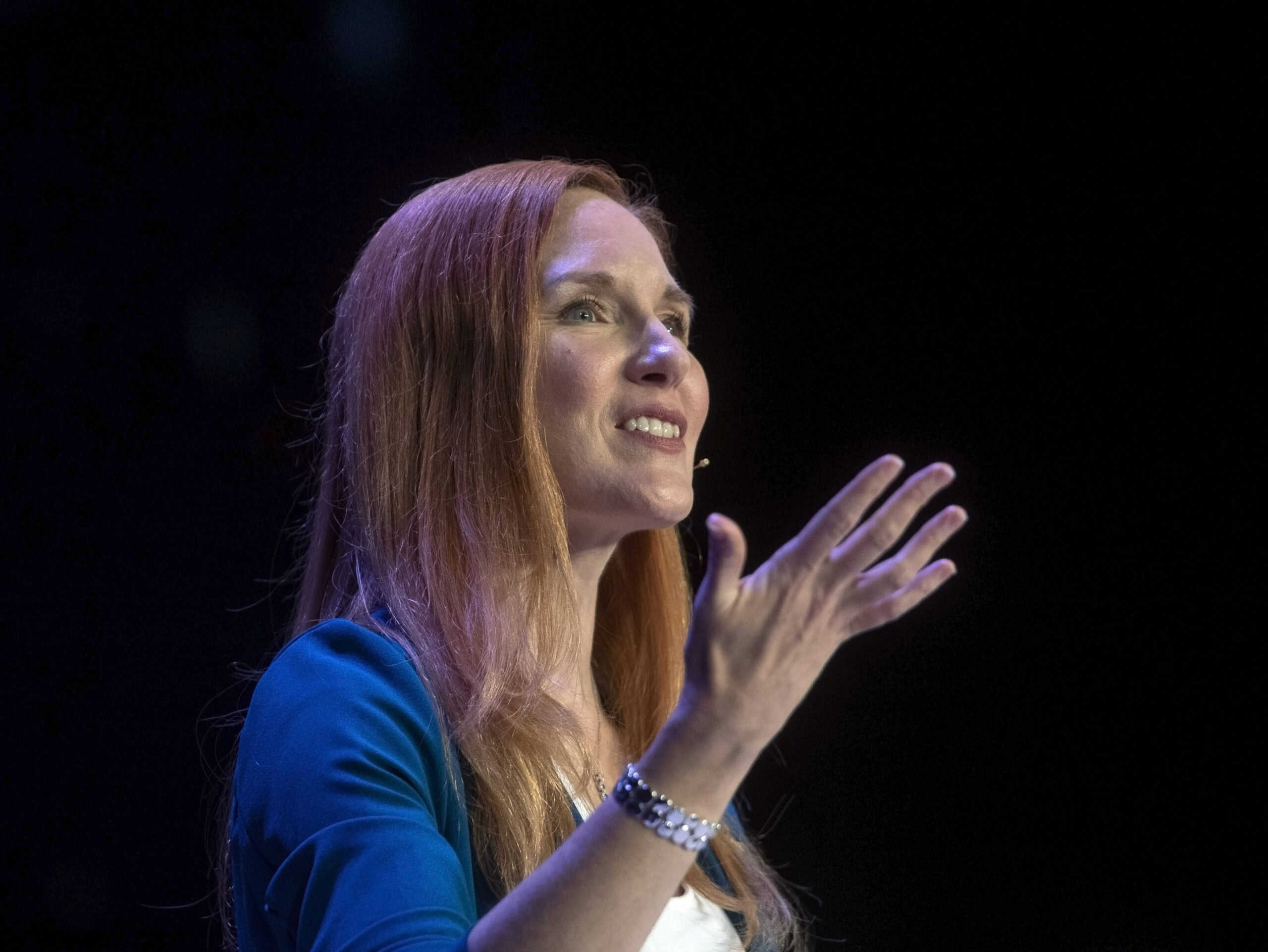
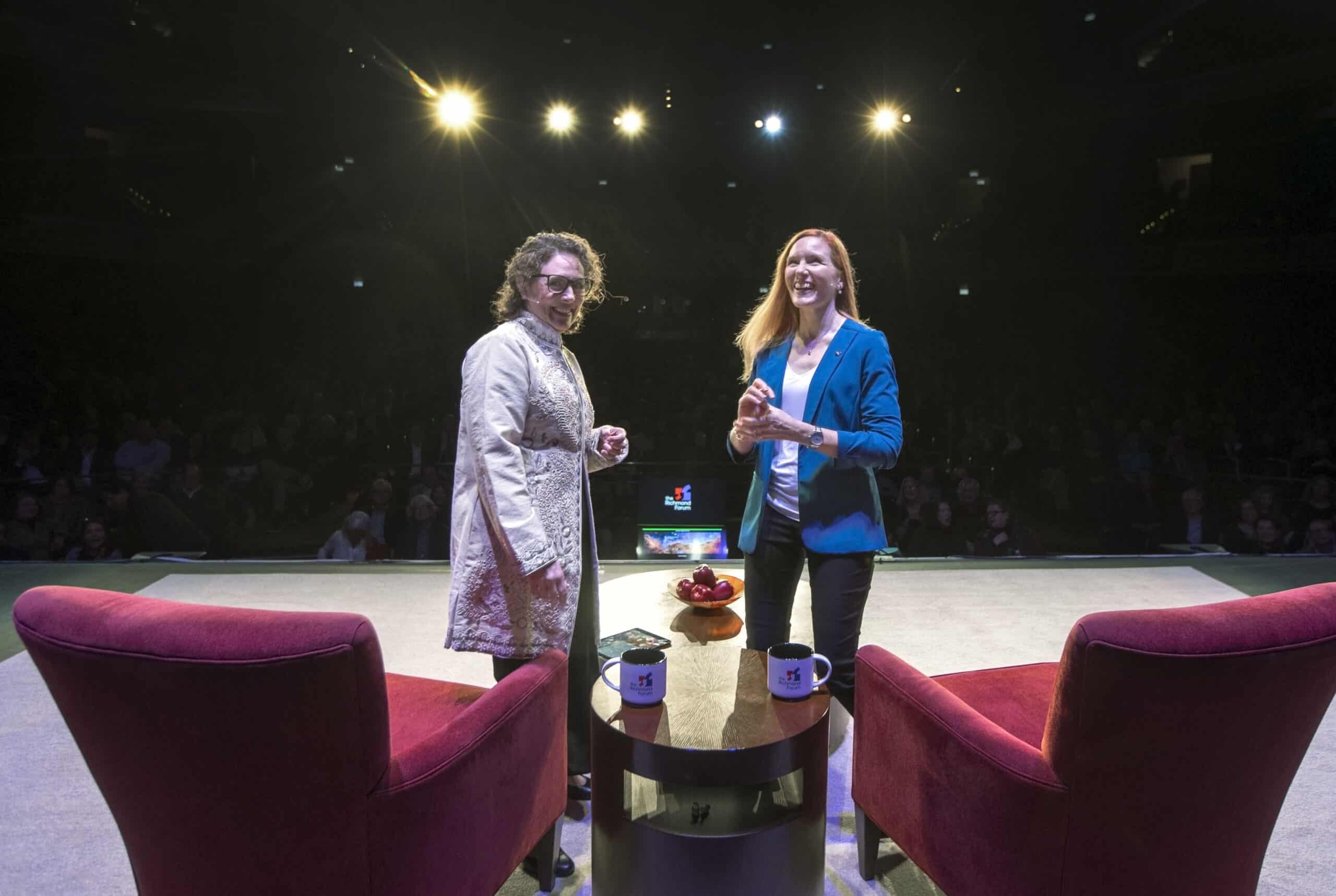
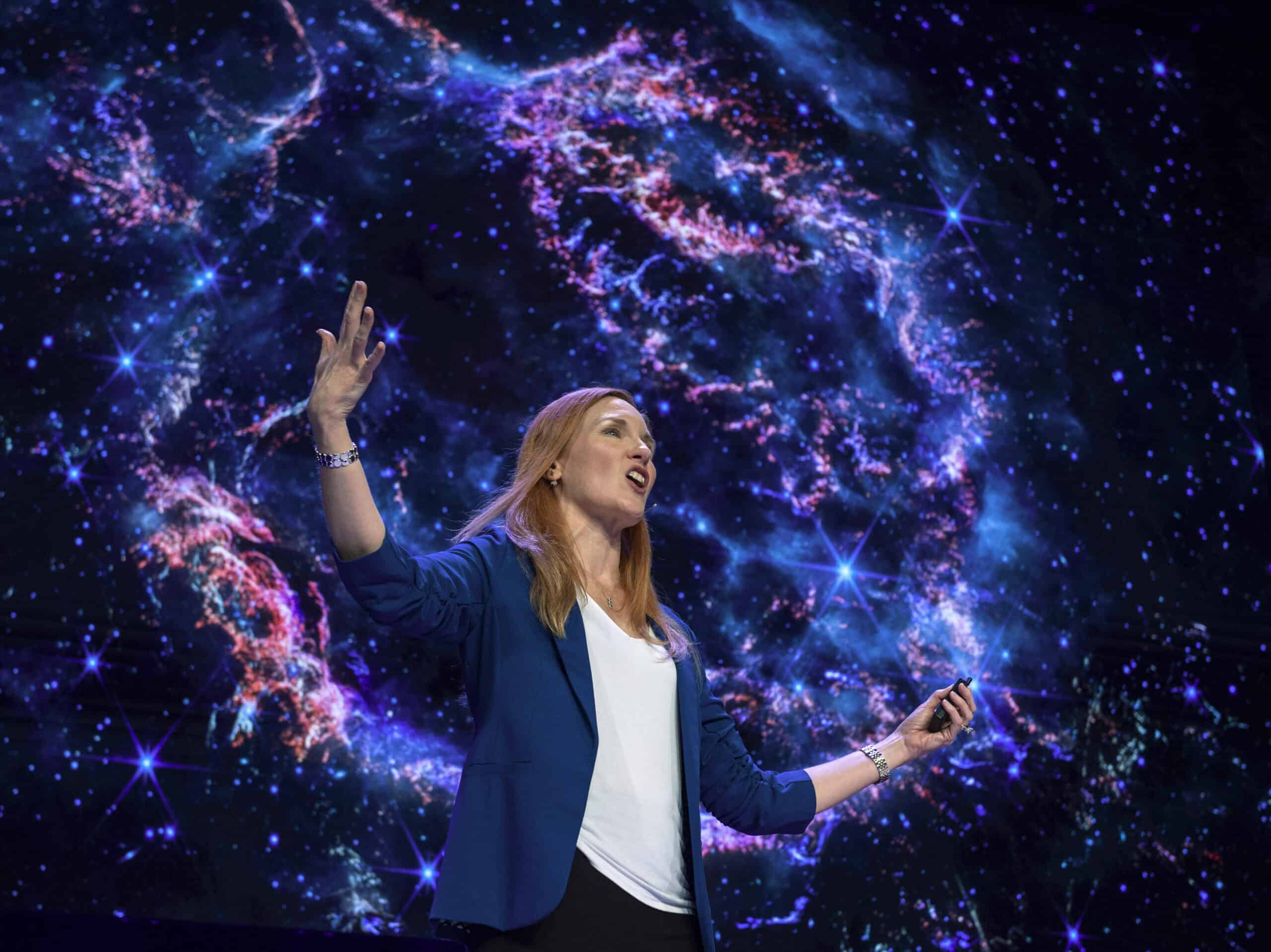
To build a telescope advanced enough to see those first luminous glows after the Big Bang was no easy feat. Scientists needed to develop ten new technologies just to get started. “This remarkable telescope really has pushed the edge of what’s possible in engineering,” Straughn said.
Straughn shared dozens of awe-inspiring examples of the unprecedented findings from the past three years, including cartwheeling galactic collisions and new stars “bursting forth out of their stellar cocoons.” The images captured by JWST are more detailed than scientists and engineers could have hoped for, with each picture showing a deep field of cosmic formations to be explored.
However, all the visible matter in the cosmos — the galaxies, planets, dust, and gases brought into focus — composes just five percent of the universe. The other 95% is made up of what Straughn refers to as the “scaffolding of the universe” — dark matter and dark energy.
To investigate these confounding astrophysical mysteries, NASA is currently building the Nancy Grace Roman Space Telescope, which is scheduled to launch in 2027. Additionally, Straughn talked about NASA’s Habitable Worlds Observatory, another telescope in development that will seek to answer the question: Are we alone in the universe?
“These telescopes do more than just answer scientific questions. They cause us to reflect on our connectedness. We’ve got each other. We’re not alone,” Straughn concluded. “This gives us reason to hope. The cosmic hope that if we put our hearts and minds towards doing something good, we can achieve the impossible.”
Continuing the Conversation
After viewing Straughn’s program, what excites you the most about the discoveries made by the James Webb Space Telescope?
Straughn discussed the importance of funding space exploration. Do you think space exploration is a worthwhile national or global investment? Why or why not?
Straughn stated that she believes evolved, conscious life exists elsewhere in the universe. What implications do you think the study of exoplanet atmospheres could have for the search for extraterrestrial life? What ethical considerations should guide our exploration of other planets?
Straughn addressed some of the ways NASA scientists work together to make exciting new discoveries. How might advancements in telescope technology benefit other fields of science and technology?
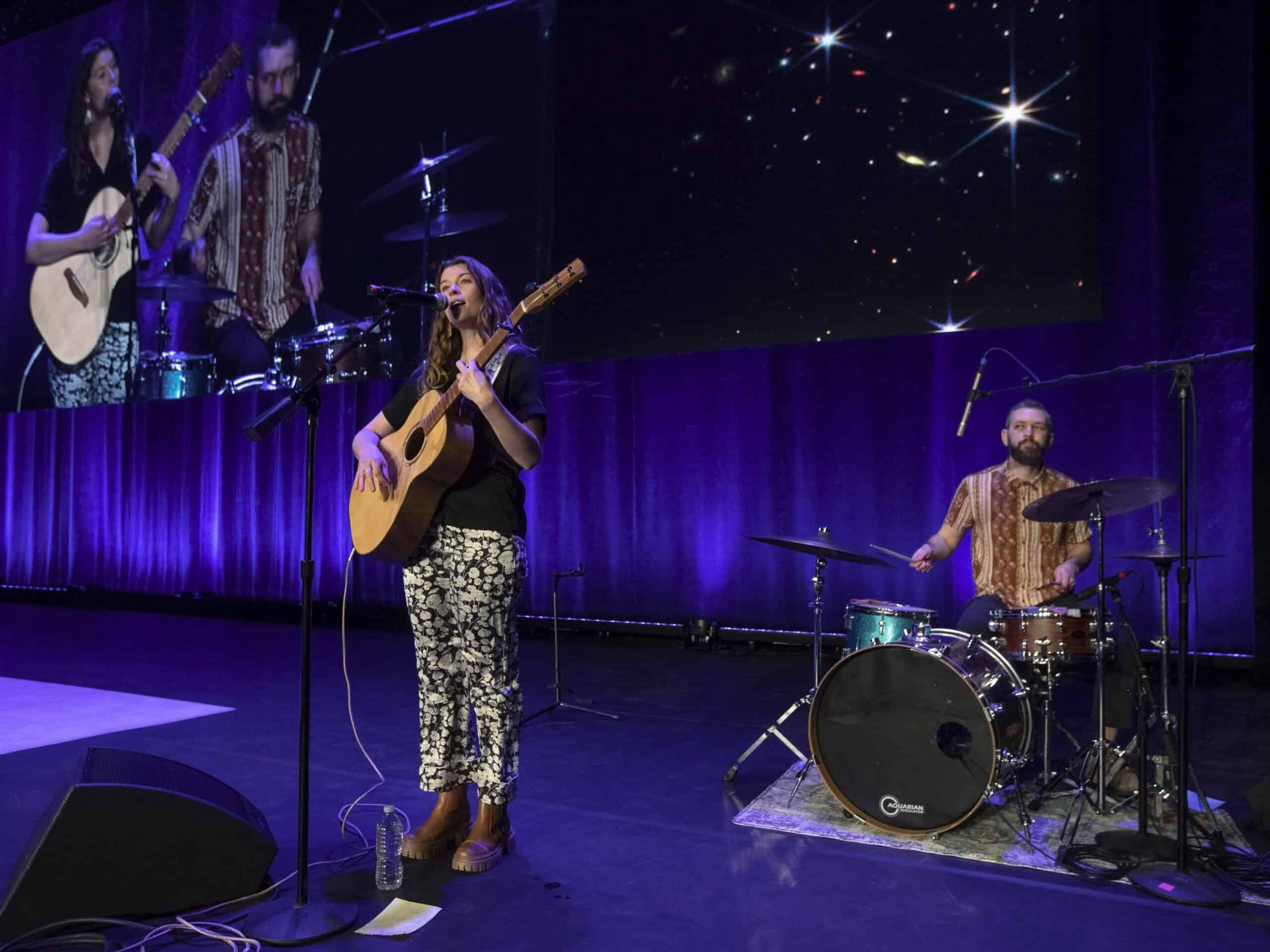
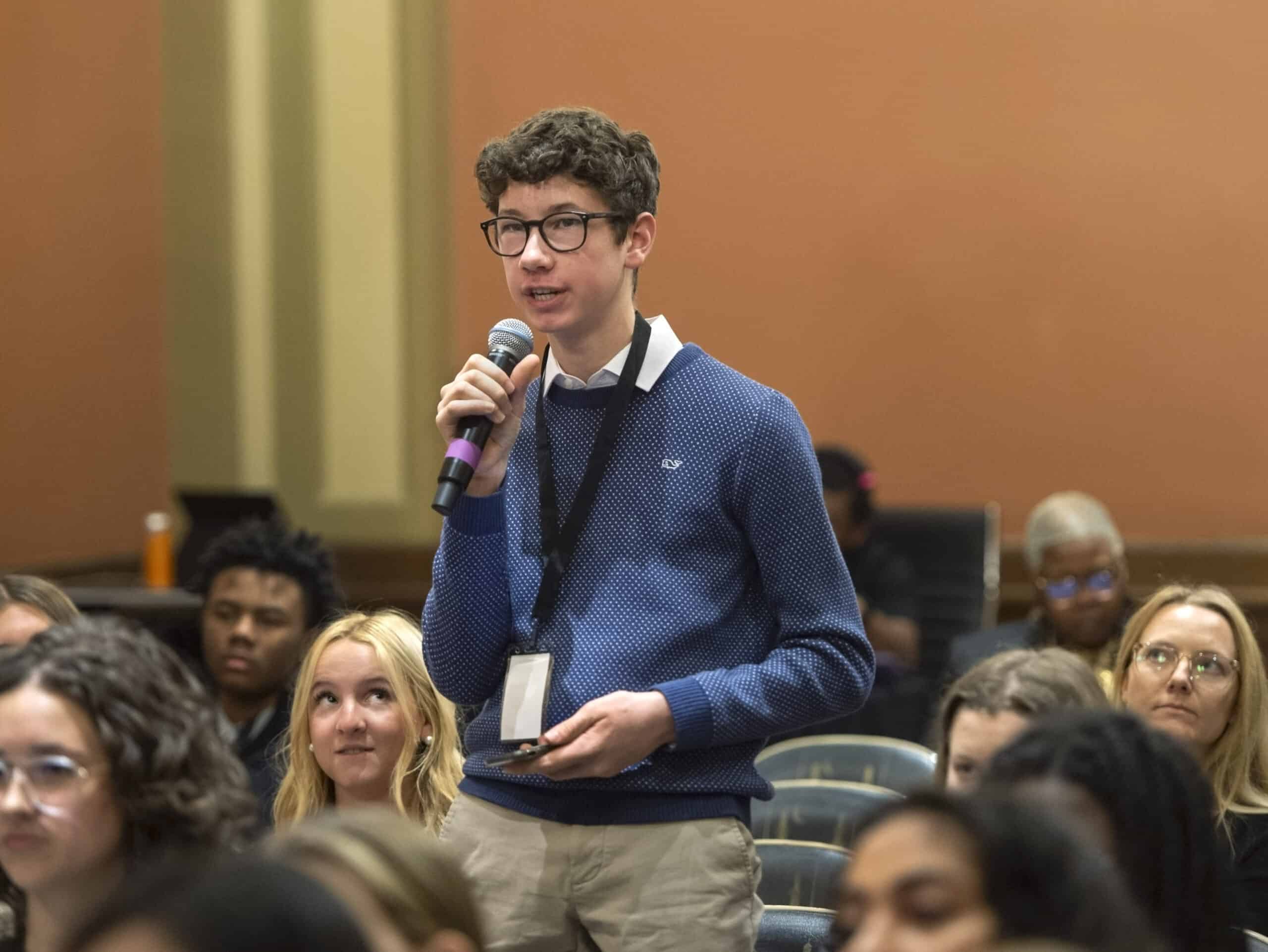
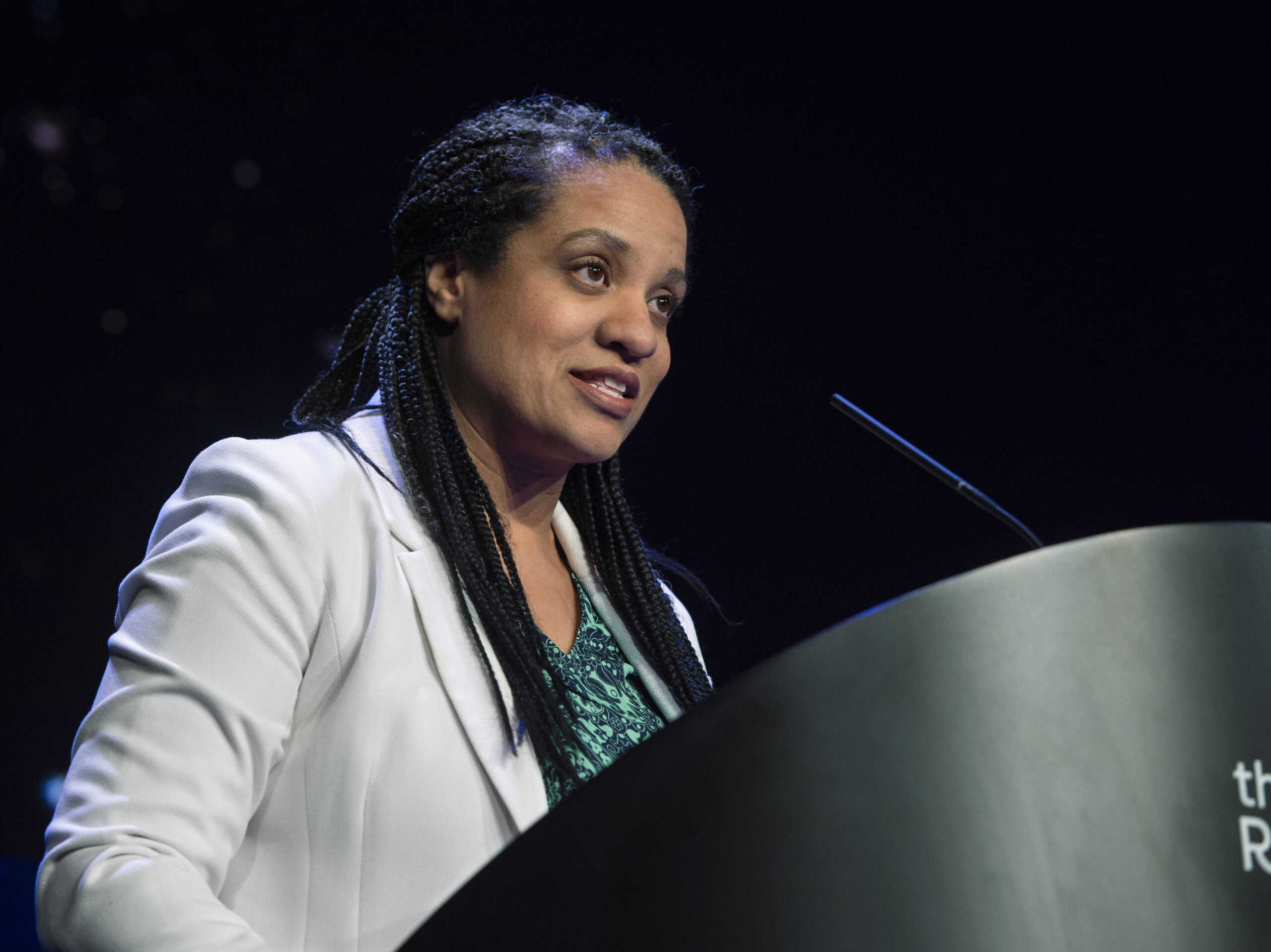
“I really enjoyed the combination of her storytelling about the JWST and the study of the universe and the stunning pictures she showed. What a great presentation that should have all of us thinking about the mysteries of the universe!”
– Subscriber Survey Comment
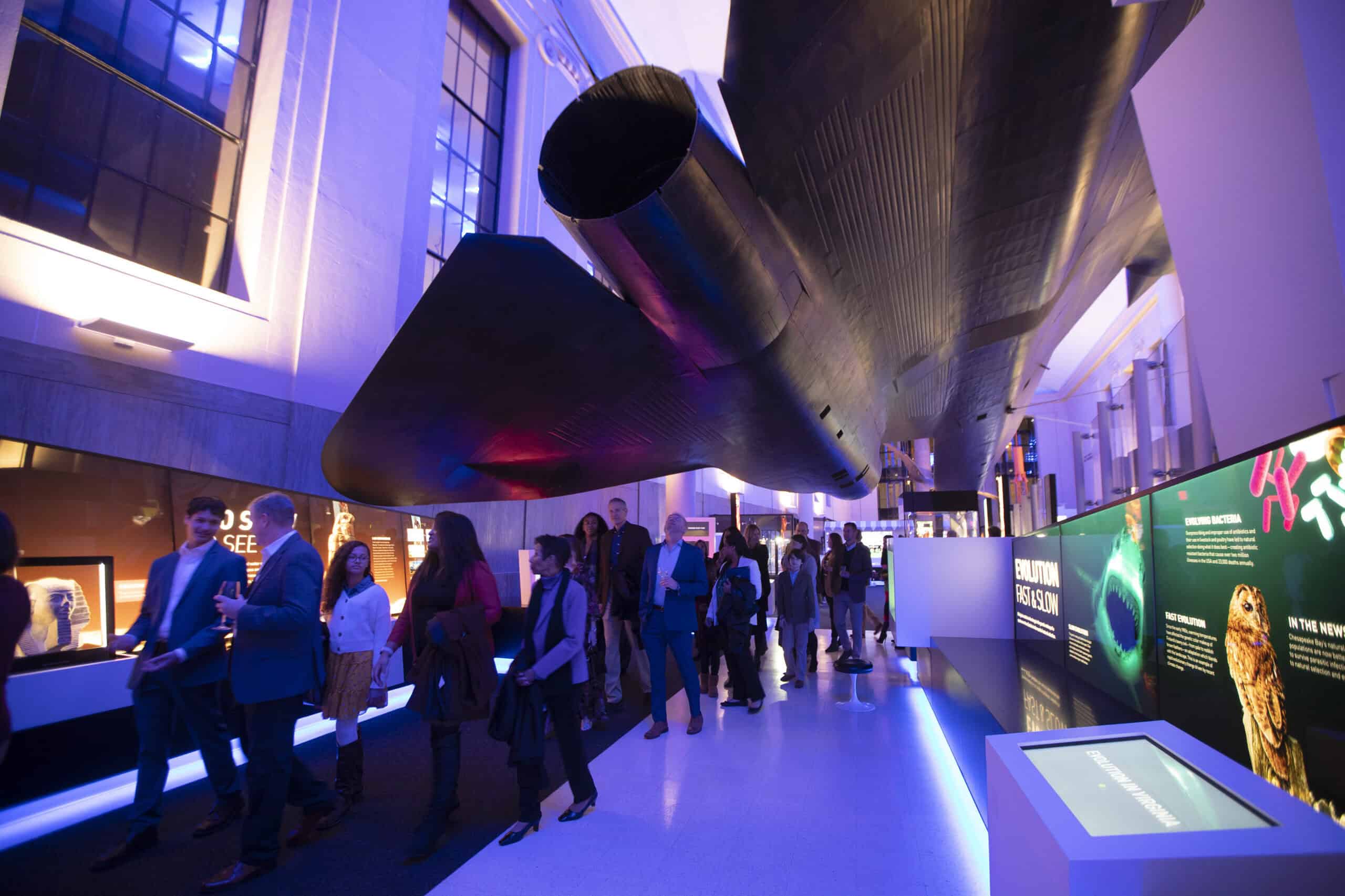
About Dr. Amber Straughn
Dr. Amber Straughn is an astrophysicist at NASA’s Goddard Space Flight Center in Greenbelt, Maryland, and is a member of the James Webb Space Telescope (JWST) science team. She also serves as the associate director of the Astrophysics Science Division.
Straughn grew up in the small farming town of Bee Branch, Arkansas, where her fascination with astronomy began under beautifully dark, rural skies. She obtained her bachelor’s degree in physics at the University of Arkansas and completed her master’s and doctoral degrees in physics at Arizona State University. She has been involved in NASA programs since her undergrad years, beginning with the time she flew an experiment on NASA’s microgravity KC-135 plane (the “vomit comet”).
Straughn is interested in how galaxies change over time. Specifically, how important are galaxy interactions in the overall picture of how galaxies grow? How do supermassive black holes, star formation, and gas inflows and outflows affect galaxy evolution over cosmic time? These questions are central to NASA’s long-term goal to discover how the universe works while exploring how it began and evolved.
In addition to research, Straughn’s role with the JWST science team involves public speaking and media engagement. She frequently speaks to large audiences in the United States and abroad. Straughn has appeared on CBS’s “60 Minutes,” PBS’s “NOVA,” the Discovery Channel, the Science Channel, NatGeo, BBC, the History Channel, and NBC’s “Late Night with Jimmy Fallon.”
Straughn lives in Maryland with her husband, Matt, and their two Great Danes. Her love of all things air and space prompted her to earn her private pilot’s license in 2013, and she is the owner of a Cessna 182. Straughn has been an active yoga practitioner since grad school, loves to hike, and is a fan of live music.
Additional Resources
-
JWST Images Captured in 2024
NASA
-
Where is Webb?: Track the telescope’s location
NASA
-
Space Cowgirl
AY Magazine
Watch Program Highlights
